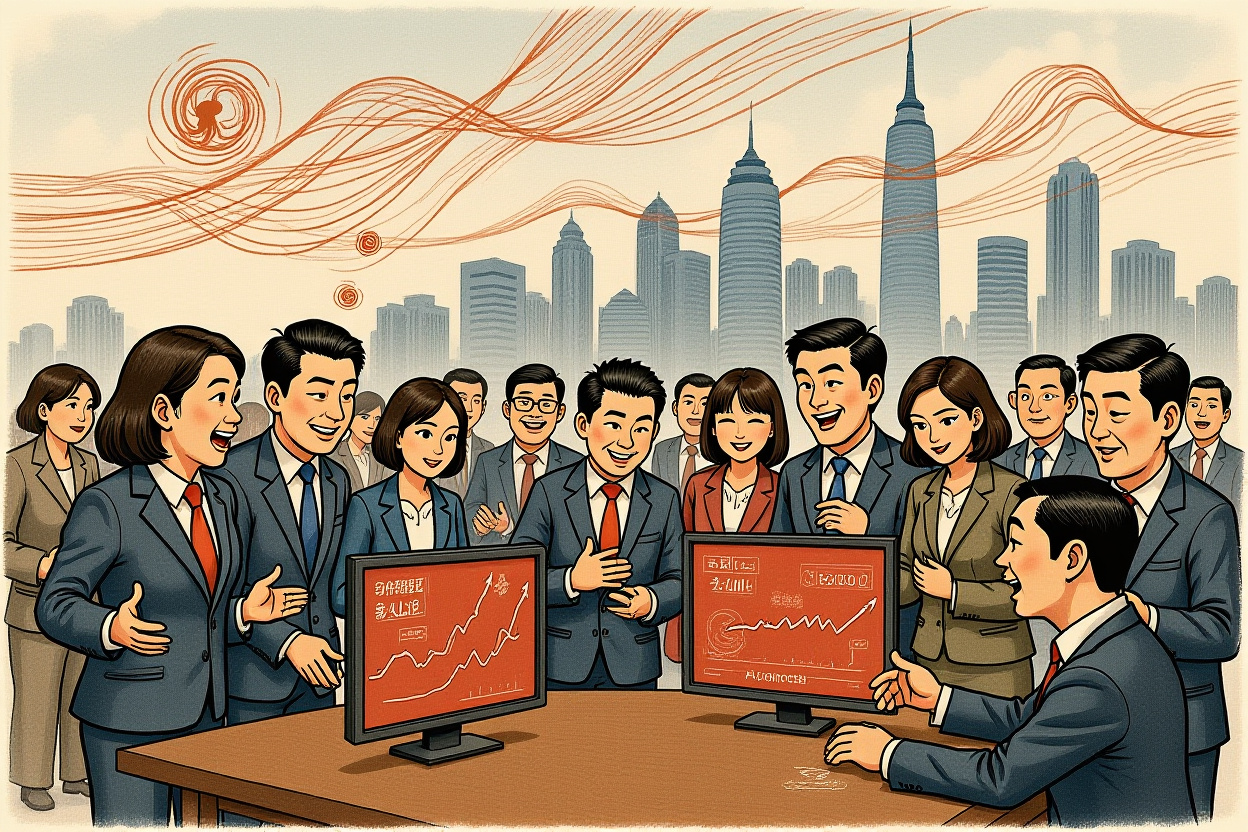Executive Summary
Key insights from the ongoing copper market dynamics:
- Copper prices hit 15-month highs due to supply disruptions and robust demand from AI,新能源, and grid investments.
- Chinese equities in the有色金属 sector, including Zijin Mining Group (紫金矿业) and Jiangxi Copper (江西铜业), have outperformed, with some stocks doubling in value.
- Goldman Sachs labels copper the ‘new oil’ for the AI era, but短期 volatility from trade tensions and inventory swings poses risks.
- Policy support from China’s工业和信息化部 (Ministry of Industry and Information Technology) aims to stabilize and upgrade the industry, fueling long-term optimism.
- Investors should monitor美联储 (Federal Reserve) policies and global库存 levels to navigate the copper frenzy effectively.
The Driving Forces Behind Copper’s Record Highs
Copper prices have soared to multi-month peaks, with London Metal Exchange (LME) futures reaching 15-month highs and Shanghai futures hitting records since June 2024. This copper frenzy is fueled by a perfect storm of supply constraints and escalating demand. Wang Hongying (王红英), President of the China Hong Kong Financial Derivatives Investment Institute, highlights three structural drivers: a widening supply-demand gap, Federal Reserve rate cuts weakening the USD, and rising避险情绪 (risk-off sentiment) boosting hard assets.
Supply Shocks and Demand Surges
The immediate catalyst was a ‘black swan’ event at Indonesia’s Grasberg copper mine, which accounts for 3.5% of global output. An accident there disrupted supplies, exacerbating an already tight market. Goldman Sachs estimates this could cause a 500,000-ton deficit over 12–15 months. On the demand side, AI infrastructure,新能源 (new energy) projects, and global grid upgrades are creating a ‘triple resonance.’ For instance, electric vehicles use up to four times more copper than traditional cars, while AI data centers rely heavily on copper for power and connectivity.
Financial Attributes and Macroeconomic Influences
Copper’s role as a financial asset has intensified, with Jing Chuan (景川), a veteran futures expert and guest professor at Xi’an Jiaotong University, noting that dollar liquidity and real interest rates now dominate pricing. The metal often trades alongside gold and Bitcoin in ‘re-inflation’ portfolios. As the Federal Reserve’s easing cycle progresses, copper’s appeal as a hedge against inflation and currency depreciation grows, amplifying its price swings.
Stock Market Rally in the有色金属 Sector
China’s有色金属 (non-ferrous metals)板块 (sector) has eclipsed even tech segments like semiconductors, posting a 69.34% gain year-to-date. This copper frenzy has propelled shares of major producers to astronomical heights. On October 9 alone, 16 stocks, including Jiangxi Copper (江西铜业) and Zijin Mining Group (紫金矿业), surged by the daily limit.
Standout Performers and Financial Results
Zijin Mining Group (紫金矿业), the world’s fourth-largest copper miner, saw its A-shares rise 99.47% in 2025, with H-shares jumping over 60% on their September debut. The company’s H1 2025 revenue hit RMB 167.711 billion, with net profit up 54.41%. Similarly, Jiangxi Copper (江西铜业) reported a 15.4% profit increase despite a revenue dip, driven by higher cathode copper output and improved cash flow. These gains reflect how the copper frenzy translates into corporate earnings and investor confidence.
Policy Tailwinds and Industry Upgrades
Government initiatives are reinforcing the bullish outlook. The铜产业高质量发展实施方案 (Copper Industry High-Quality Development Implementation Plan) for 2025–2027 and the有色金属行业稳增长工作方案 (Non-Ferrous Metals Industry Steady Growth Work Plan) aim to boost sector efficiency and curb overcapacity. By promoting smart and green manufacturing, these policies reduce internal competition and support valuation multiples, giving investors additional reasons to engage in the copper frenzy.
Navigating Volatility and Investment Risks
While the long-term narrative for copper remains strong,短期 (short-term) turbulence is inevitable. The copper frenzy faced a sharp setback on October 11, when LME prices plunged over 5% after former U.S. President Donald Trump threatened 100% tariffs on Chinese goods. Wang Hongying (王红英) attributes such swings to policy shocks and inventory adjustments, warning that copper equities are prone to sharp corrections.
Short-Term Headwinds and Market Reactions
Goldman Sachs cautions that near-term supply may still outstrip demand, limiting upside momentum. Companies like Jiangxi Copper (江西铜业) and CMOC Group (洛阳钼业) explicitly flag risks from price volatility, geopolitics, and currency fluctuations in their disclosures. For instance, CMOC’s operations in the Democratic Republic of Congo face political uncertainties that could disrupt output. Investors must weigh these factors against the copper frenzy’s euphoria.
Long-Term Prospects and Strategic Advice
Experts concur that copper’s fundamentals are sound. Jing Chuan (景川) projects that新能源 (new energy) will elevate copper’s consumption share from 11% to 25%, fostering a ‘周期公用事业化’ (cyclical utility) valuation shift.方正证券 (Founder Securities) forecasts supply shortages by 2026, advocating for strategic allocations on dips. However, diversification and risk management are crucial, as the copper frenzy may see continued oscillations from trade policies and Fed decisions.
Synthesizing the Copper Market Outlook
The copper frenzy underscores a pivotal shift in global commodities, driven by digitalization and decarbonization. Supply disruptions, AI-driven demand, and supportive policies have created a sustained rally, but investors must stay vigilant about volatility. Monitor LME库存 (inventories), Federal Reserve announcements, and China’s工业数据 (industrial data) for timing entries. As the world races to secure copper, astute positioning in quality equities and ETFs could yield rewards, but always balance optimism with due diligence. For deeper insights, refer to regulatory filings from the上海期货交易所 (Shanghai Futures Exchange) and reports by institutions like Goldman Sachs.



